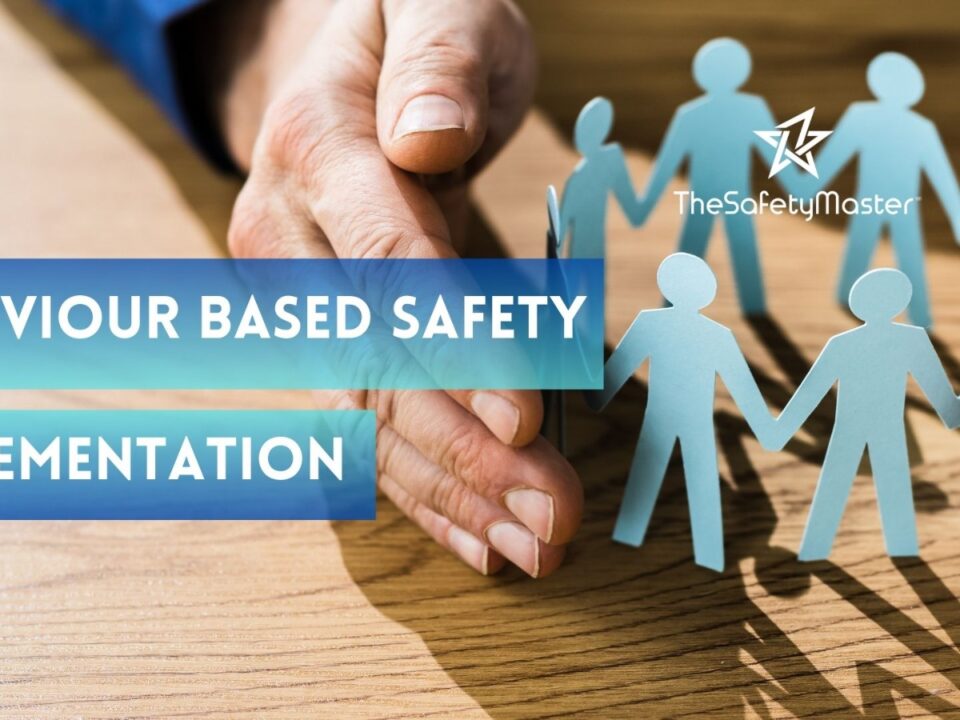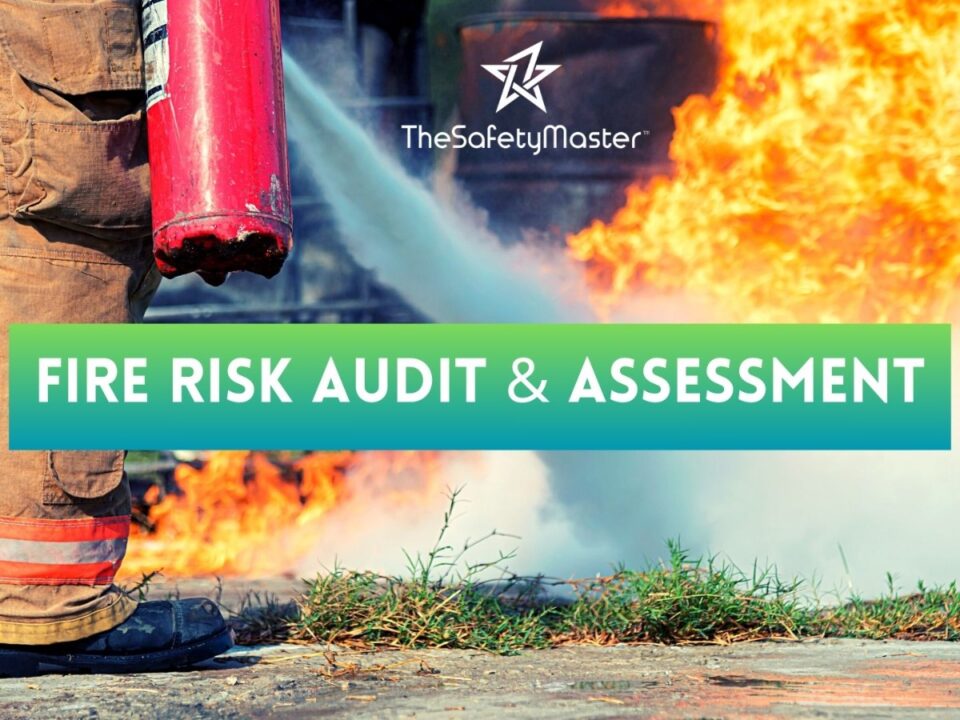Pre startup Safety Review by TheSafetyMaster

Lightening protection risk assessment by TheSafetyMaster
August 17, 2023
Emerging Trends in Safety Software: India’s Tech-Driven Safety Revolution
August 18, 2023Ensuring the safety of employees and the smooth operation of a startup is a top priority for any business owner. However, in the excitement and rush to bring innovative ideas to life, safety considerations can sometimes be overlooked. This is where a Pre Startup Safety Review comes into play. In this article, we will delve into the power of Pre Startup Safety Reviews and explore why they are crucial for startups in today’s fast-paced world.
When starting a new venture, entrepreneurs often focus on developing brilliant strategies, securing funding, and assembling a talented team. While these aspects are undoubtedly important for success, neglecting safety measures can lead to catastrophic consequences. A Pre Startup Safety Review serves as an essential tool that allows startups to identify potential hazards and implement necessary precautions before commencing full-scale operations.
The Power of Pre Startup Safety Reviews
In the fast-paced world of startups, where innovation and growth are often at the forefront of every entrepreneur’s mind, safety considerations can sometimes take a backseat. However, overlooking safety measures in the early stages of a startup can have catastrophic consequences. This is where the power of pre startup safety reviews comes into play.
Pre startup safety reviews act as the foundation upon which a culture of safety is built within your startup. By thoroughly assessing potential risks and hazards before operations commence, you are taking proactive steps to protect both your employees and your business from harm. It is a powerful tool that allows you to identify potential vulnerabilities and implement necessary safeguards to ensure the well-being of everyone involved.
Understanding the Importance of Safety in Startups
Safety should be at the forefront of every endeavor, particularly in the fast-paced and unpredictable world of startups. While entrepreneurs often prioritize innovation and growth, neglecting safety measures can have disastrous consequences. It is crucial for startup founders and leaders to recognize that a strong safety culture is not just a legal requirement, but also a fundamental element of success.
By prioritizing safety from the outset, startups can protect their most valuable asset: their people. Employees who feel safe and secure in their work environment are more likely to be engaged, productive, and satisfied. Moreover, an emphasis on safety instills trust among stakeholders including investors, customers, and partners. In fact, demonstrating a commitment to safety can even become a competitive advantage as it showcases responsible leadership and reliability.
Why Does Your Startup Need a Pre Startup Safety Review?
Ensuring the safety of your startup may not be the first thing that comes to mind when you are in the midst of launching a new venture. However, overlooking safety measures can have dire consequences for both your employees and your business as a whole. That is why a pre startup safety review is crucial for any budding startup.
A pre startup safety review allows you to identify potential hazards and risks before they become major issues. It provides an opportunity to assess and mitigate any potential dangers that could harm your personnel or disrupt your operations. By proactively addressing safety concerns from the beginning, you set a solid foundation for long-term success.
The Key Elements of a Successful Pre Startup Safety Review
When it comes to conducting a pre startup safety review, there are several crucial elements that must be taken into consideration. These elements form the backbone of a comprehensive and effective safety review process, ensuring that your startup is well-prepared to mitigate potential risks and create a safe working environment for all.
1. Thorough Risk Assessment: The first step in any successful pre startup safety review is conducting a thorough risk assessment. This involves identifying and analyzing potential hazards and risks associated with your startup’s operations, processes, equipment, and facilities. By meticulously evaluating each aspect of your business, you can gain valuable insights into areas that require attention and implement appropriate control measures to minimize or eliminate potential risks.
2. Clear Safety Objectives: Establishing clear safety objectives is essential for creating a robust pre startup safety review process. These objectives provide a roadmap for your startup’s safety initiatives by outlining specific goals that need to be achieved. Whether it involves reducing the number of accidents or enhancing emergency response capabilities, setting measurable safety objectives ensures accountability and encourages continuous improvement within your organization.
3. Comprehensive Documentation: A key element of an effective pre startup safety review is documenting every aspect of the process comprehensively. This includes recording risk assessments, safety policies and procedures, training programs, incident reports, and any other relevant information related to safety in your startup environment. Documentation not only demonstrates compliance with regulatory requirements but also serves as a valuable resource for future reference, enabling you to track progress over time.
4. Collaboration and Communication: Building a
Step-by-Step Guide to Conducting a Pre Startup Safety Review
Conducting a thorough pre startup safety review is vital in ensuring the well-being of your startup and its personnel. This step-by-step guide will provide you with a comprehensive framework to follow, ensuring that no stone is left unturned in identifying potential hazards and implementing effective safety measures.
1. Define the Scope: Begin by clearly defining the scope of your pre startup safety review. Identify the specific areas, processes, and equipment that will be assessed for potential hazards and risks.
2. Assemble a Competent Team: Put together a team of individuals with expertise in various areas such as engineering, operations, and safety. Collaborate with them to conduct a detailed assessment of every aspect related to safety within your startup environment.
3. Identify Potential Hazards: Systematically go through each area of your startup and identify potential hazards or risks that could compromise the safety of personnel or operations. This includes examining equipment, workstations, electrical systems, chemicals, and any other factors that may pose a threat.
… (continue with additional steps)
Identifying Potential Hazards and Risks
In the realm of startups, where innovation and ambitious ideas take center stage, it is crucial to conduct a thorough assessment of potential hazards and risks that may pose a threat to the safety of your workforce. Identifying these hazards not only ensures the well-being of your employees, but also protects the integrity and reputation of your startup.
One way to identify potential hazards is through a comprehensive evaluation of your startup’s physical environment. Take the time to examine each area, from office spaces to production floors, looking for any potential dangers such as exposed electrical wiring or slippery surfaces. Pay attention to ergonomic factors as well – ensure workstations are ergonomically designed to prevent musculoskeletal disorders. Furthermore, consider conducting air quality tests if necessary, as poor indoor air can result in respiratory issues.
Addressing Safety Concerns in Your Startup Environment
When it comes to addressing safety concerns in your startup environment, vigilance and proactivity are key. It is essential to create a culture where safety is ingrained into the very fabric of your organization. Start by conducting a thorough assessment of your workplace, identifying potential hazards that could jeopardize the well-being of your employees.
Once you have identified these concerns, take immediate action to mitigate risks and create a safe working environment. This may involve implementing safety protocols, providing protective equipment, or redesigning workspaces to minimize hazards. Encourage open communication channels where employees can report any safety issues they encounter without fear of reprisal.
Furthermore, fostering a culture of continual improvement is crucial. Regularly review and update your safety policies and procedures as needed, ensuring they align with industry best practices. Invest in training programs that empower employees with the knowledge and skills necessary to identify and respond to potential dangers effectively.
Your startup’s success hinges on the well-being and satisfaction of your team members. By actively addressing safety concerns in your startup environment, you not only protect them from harm but also foster an atmosphere of trust and productivity. Remember, prioritizing safety is not just a legal obligation; it is an ethical responsibility that contributes to the long-term prosperity of your venture.”
Creating a Safety-first Culture in Your Startup
Building a safety-first culture within your startup is crucial for the long-term success and well-being of your team members. It means instilling in all individuals the understanding that safety is not just a priority but an integral part of every aspect of your business operations. By fostering this culture, you empower your employees to take ownership of their safety and the safety of their colleagues, creating an environment where everyone feels valued, protected, and motivated.
To start creating a safety-first culture, it is essential to lead by example. As a founder or manager, you must embody the values and behaviors you want to see in others. Communicate openly about safety expectations and guidelines, emphasizing that following these protocols is not only expected but celebrated. Encourage active participation from all team members by seeking their input on potential hazards, providing them with opportunities for feedback, and recognizing their contributions towards maintaining a safe working environment.
Implementing Safety Measures and Protocols
Once potential hazards and risks have been identified during the pre startup safety review, it’s crucial to take prompt action in implementing effective safety measures and protocols. This proactive approach will establish a strong foundation for a safe working environment within your startup.
Firstly, consider conducting a thorough evaluation of your workspace layout, equipment, and processes to ensure they adhere to industry standards and regulations. Implementing engineering controls such as machine guards, ventilation systems, and ergonomic designs can significantly reduce the risk of accidents or injuries.
In addition to physical modifications, it’s essential to establish clear safety protocols that outline the correct procedures for various tasks. Regularly communicate these protocols to all employees through training programs or informational materials. Encourage open communication channels where employees can report any safety concerns or near-miss incidents without fear of repercussions.
Incorporate regular inspections and maintenance checks for equipment and machinery to prevent breakdowns or malfunctions that may compromise safety. Encourage a culture of responsibility where everyone is accountable for their actions regarding safety compliance.
Training and Education for Personnel
Ensuring that your startup personnel are equipped with the necessary knowledge and skills to handle potential safety hazards is paramount in creating a secure work environment. Training and education play a crucial role in instilling a safety-first mindset within your team.
Firstly, identify the specific safety training needs of each employee based on their roles and responsibilities. This may include general safety awareness, equipment operation, emergency preparedness, or hazardous materials handling. By tailoring training programs to individual needs, you empower your personnel with the expertise needed to address potential risks effectively.
Consider implementing interactive training methods such as simulations or hands-on practice sessions. Engaging employees actively in their learning process not only enhances retention but also cultivates a sense of confidence in handling challenging situations.
Remember that education should be an ongoing process rather than a one-time event. Regular refresher courses and updates on emerging safety practices will ensure that your personnel remain up-to-date with the latest industry standards.
Conclusion
In conclusion, the implementation of a thorough pre startup safety review is not only a legal obligation but also a critical step towards ensuring the well-being of your team and the success of your startup. By proactively identifying potential hazards and risks, addressing safety concerns, fostering a culture of safety, and implementing effective safety measures, you are setting your startup on a path of prosperity. Remember, when it comes to safety, there can never be too much precaution. Embrace this opportunity to create a workplace that prioritizes the welfare of its employees and watch as your startup thrives in an environment where innovation and safety go hand in hand.
With Best Wishes
Sanjeev Paruthi
TSM TheSafetyMaster® Private Limited
Unit No 221-451-452, SPL1/J, 2nd & 4th Floor, Sunsquare Plaza Complex, RIICO Chowk, Bhiwadi 301019, Rajasthan, India
Phone: +91 1493 22 0093
Mobile: +91 7665231743/9413882016
Email: info@thesafetymaster.com



